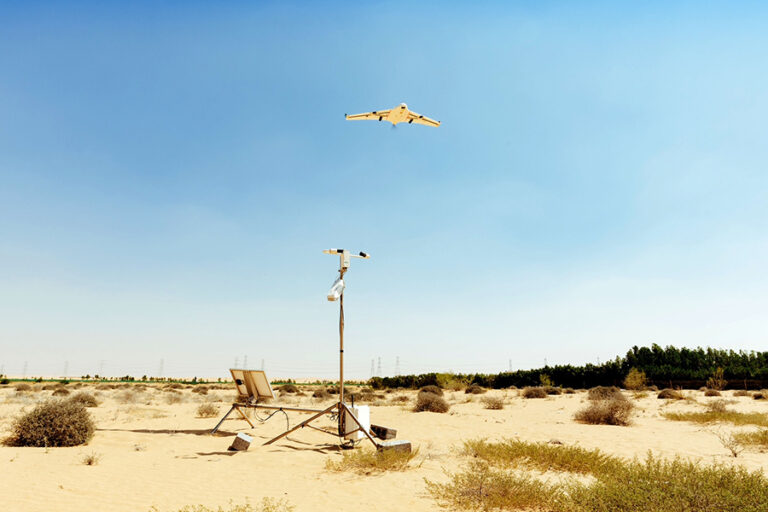As part of the UAE Research Program for Rain Enhancement Science (UAEREP), the country’s National Center of Meteorology (NCM) has launched a campaign to evaluate the effectiveness of electric charge emission technology in modifying the behavior of cloud droplets. The aim of the campaign is to enhance the rainfall process.
Taking place at the SANAD Academy, the UAE’s remotely piloted aircraft training and certification academy, the campaign uses unmanned aerial vehicles (UAVs) equipped with a payload of electric charge emission instruments and customized sensors.
Charge emission technology can enable the use of a small and lightweight platform to deliver a charge into the clouds instead of traditional cloud seeding payloads, which require much larger aircraft. This method does not involve the emission of any solid particles into clouds, such as silver iodide or salt.
Developed and tested in the UK and Finland, the effectiveness of the payload for charge emission and electrification is tested on clear air days in the UAE and then, once conditions permit, in light fog events as the presence of dust particles in the UAE atmosphere is expected to lead to more highly charged conditions. The UAVs fly at low altitudes around a meteorological mast instrumented with an electric field mill. Charge is emitted by the UAV and detected at the surface by the electric field mill.
Led by Giles Harrison, professor of atmospheric physics at the UK’s University of Reading, the campaign is conducted with the support of experts from NCM, UAEREP and several local and international research and academic organizations including the University of Bath.
Professor Giles Harrison, said, “Our project aims to evaluate the importance of charge in affecting the cloud droplet size distribution and rainfall generation through modifying the behavior of droplets and particles and studying the microphysical and electric properties of fog events. We are using UAVs in our test campaigns as they provide a cost-effective and flexible method of delivering charge to cloud layer altitudes.”



